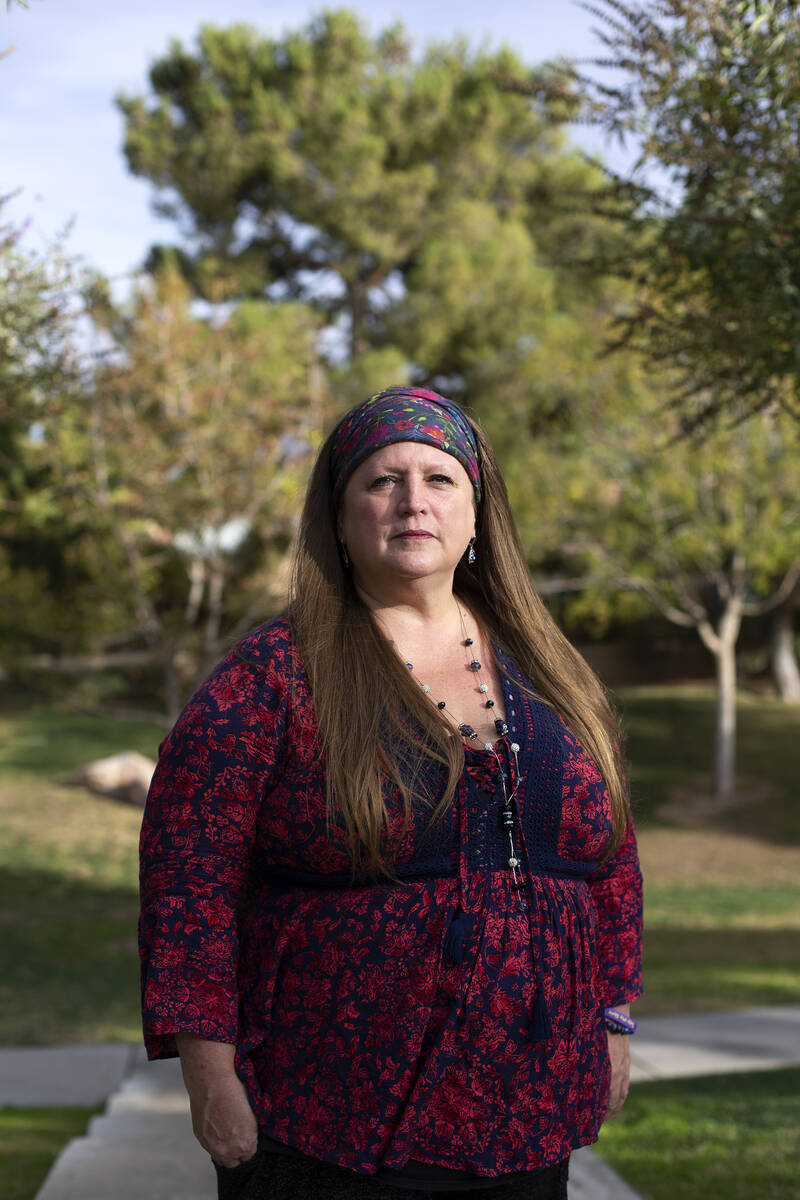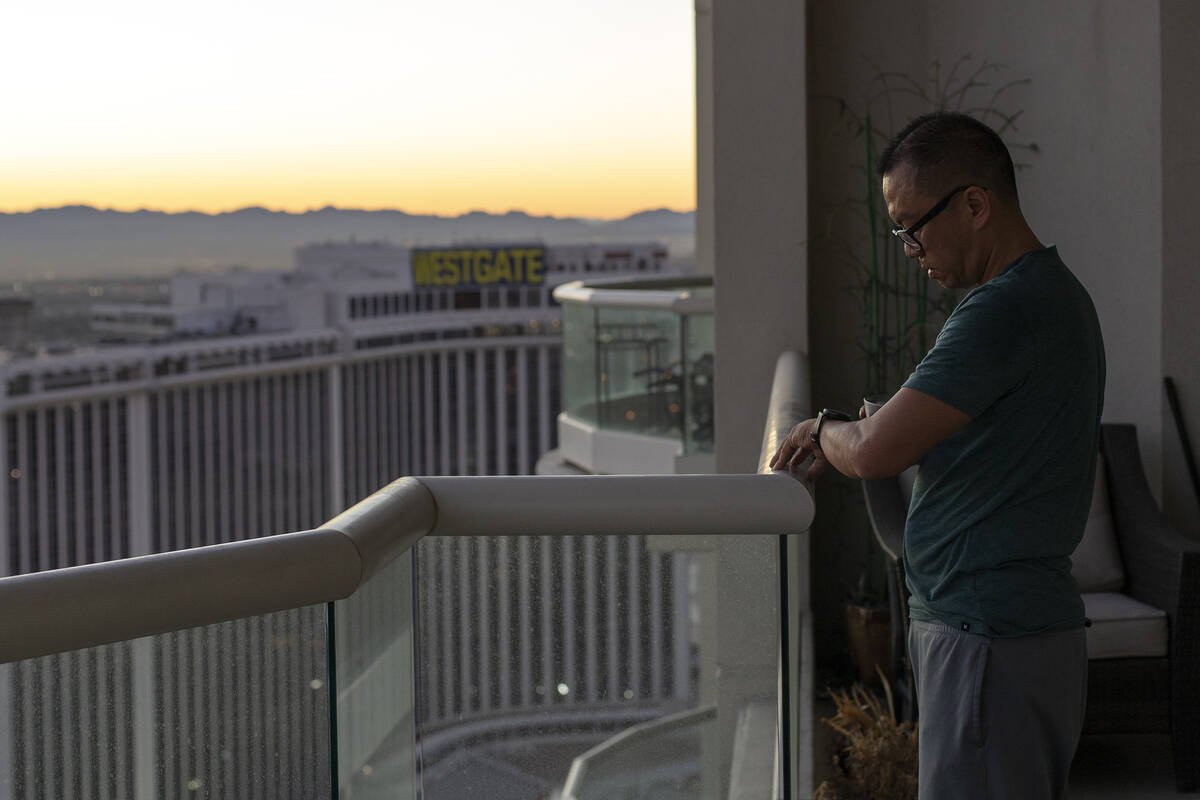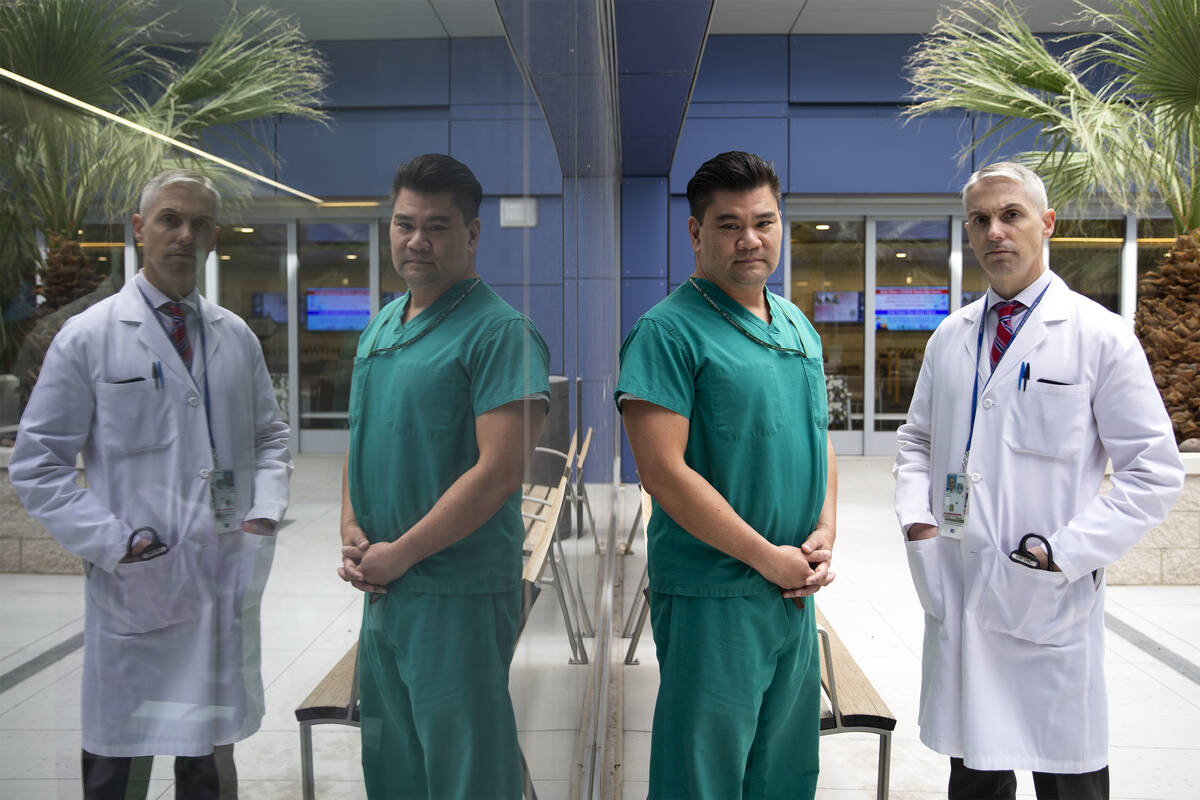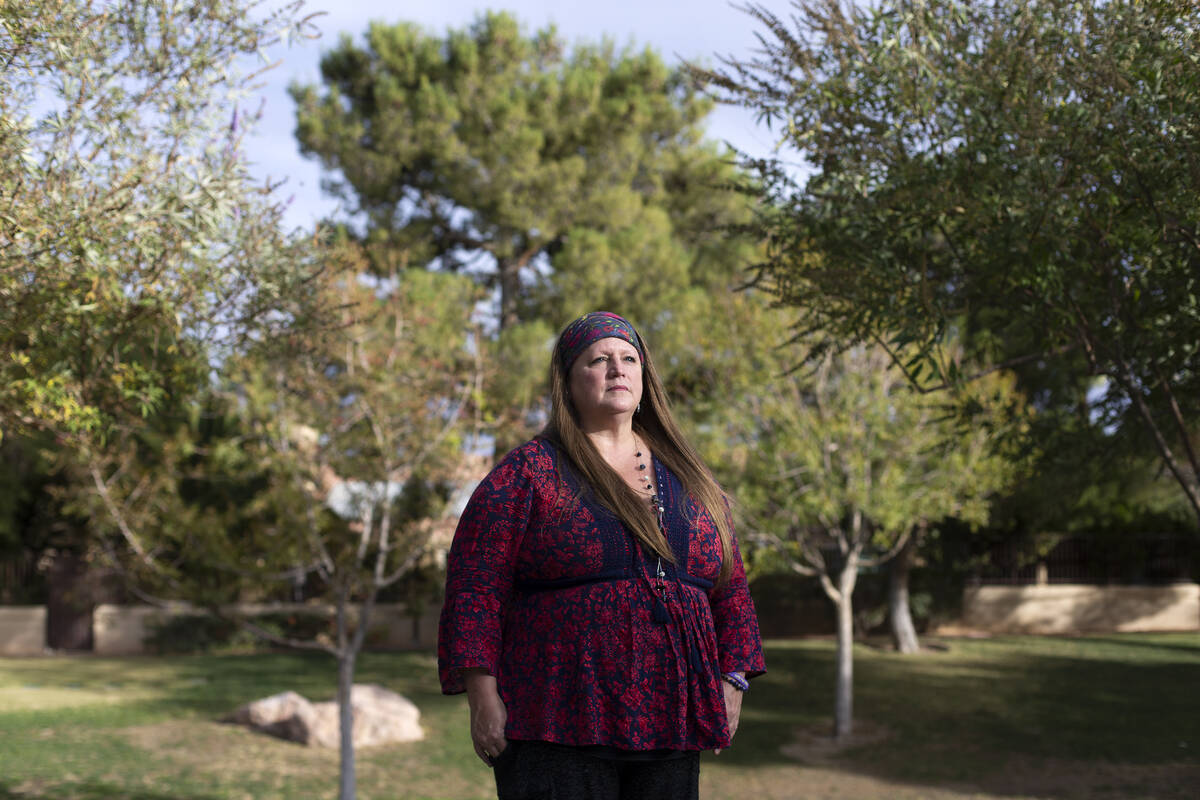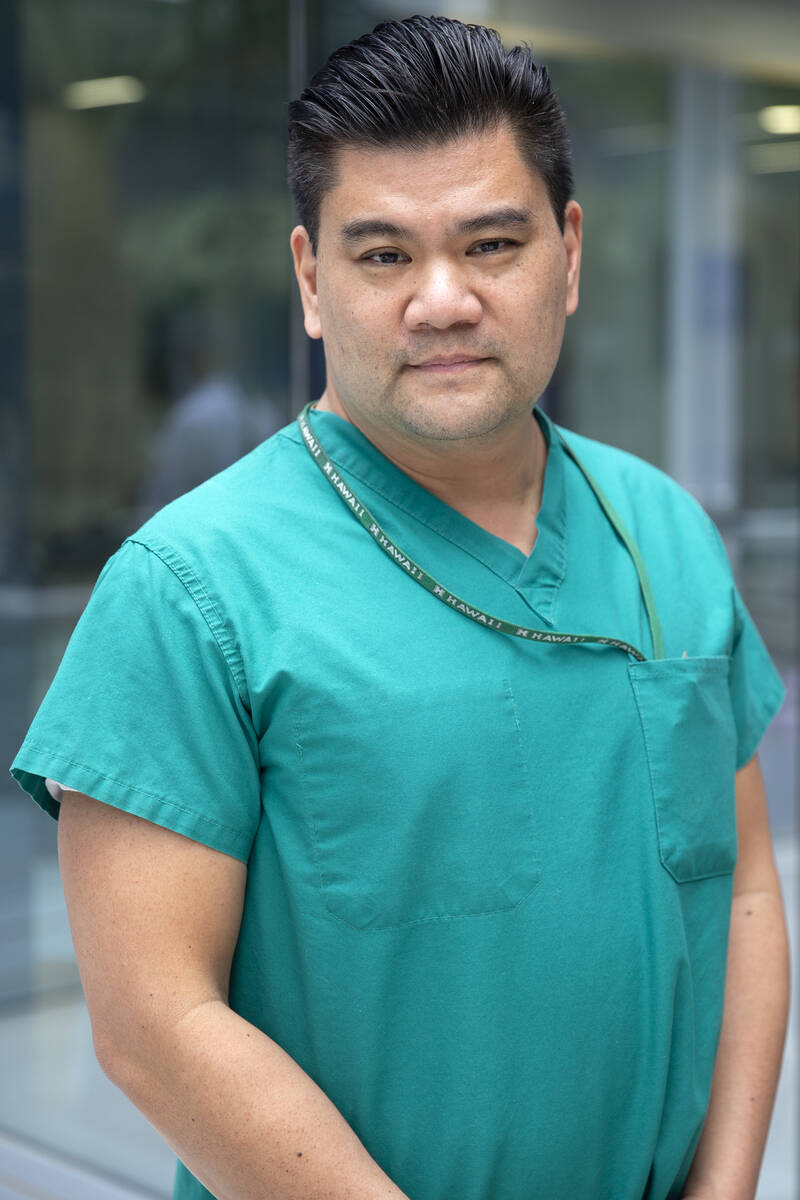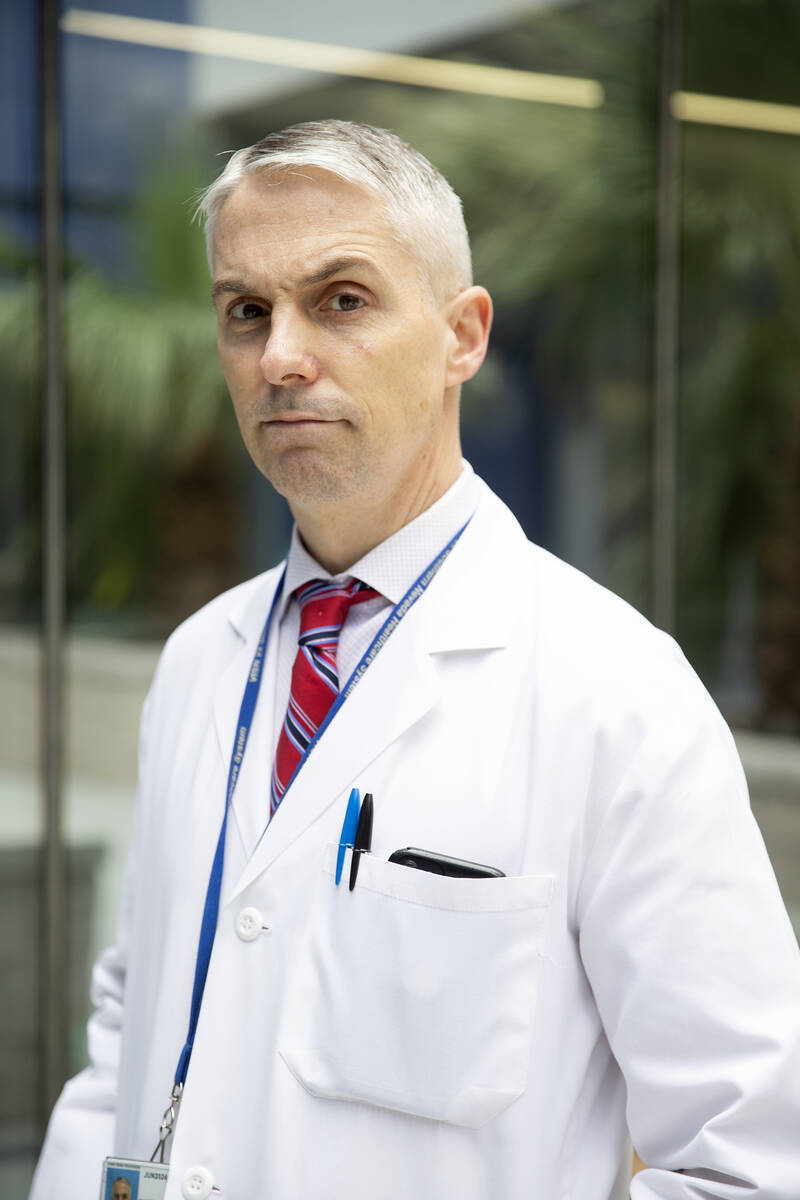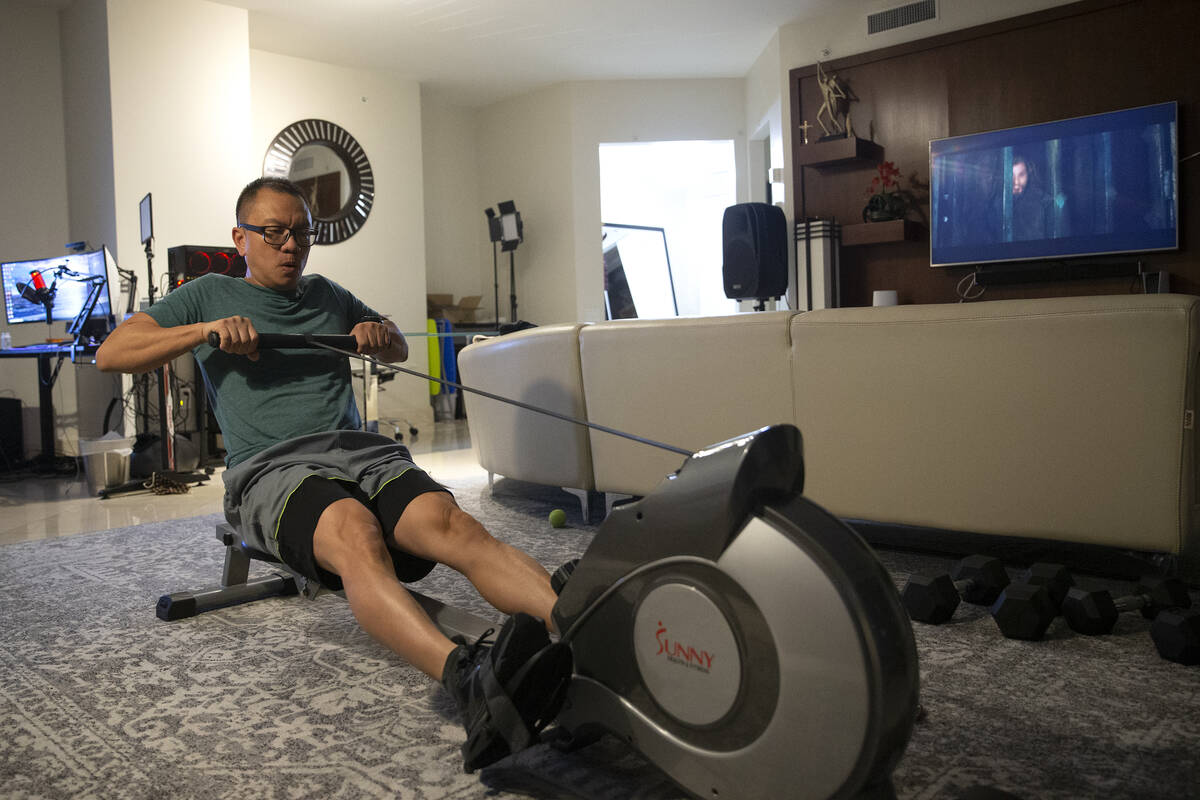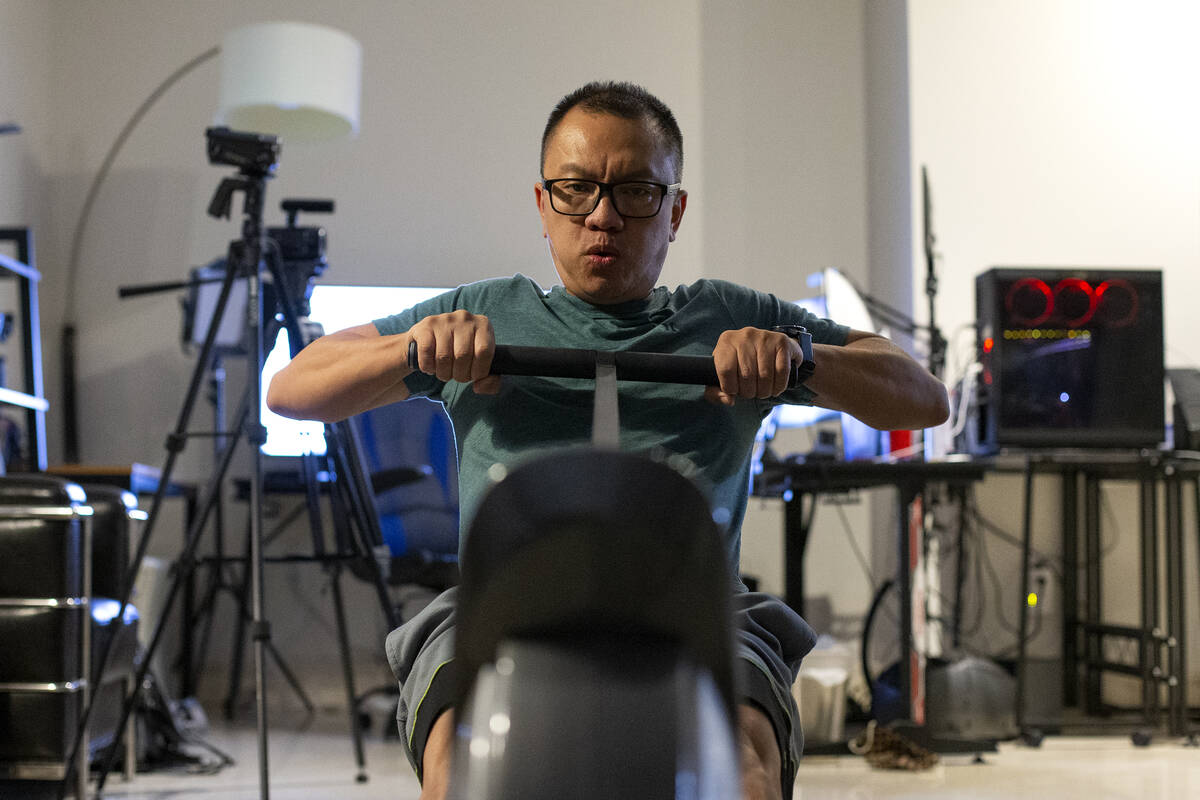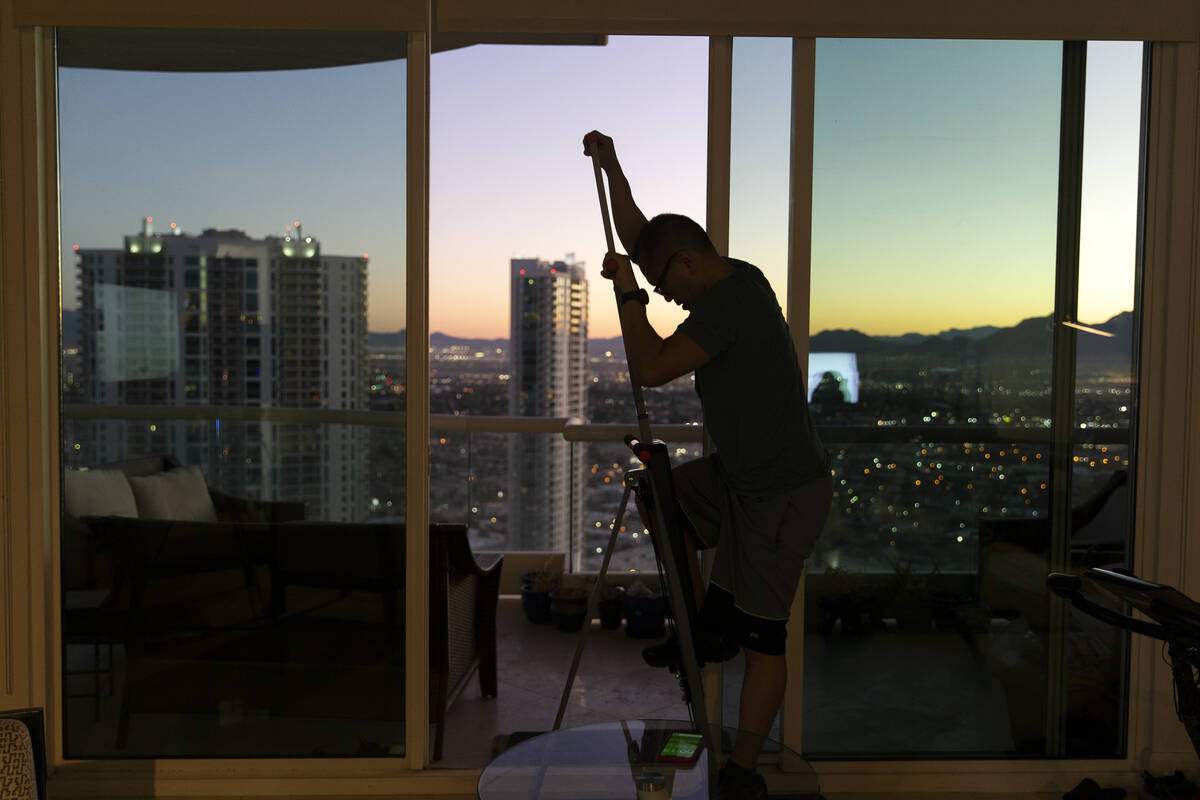Long COVID patients ‘begging for help’ with lingering health problems
After spraying cologne on his wrist one morning, Matt Breslow knew something was amiss.
“I’m like, ‘I don’t smell this. Oh crap,’” recalled the 36-year-old, who had developed a telltale sign of COVID-19.
The Reno resident tested positive for the virus. At first, his symptoms were limited to the loss of taste and smell and, for a few days, a low-grade fever.
“I thought I’d got the easy end of the stick,” said Breslow, who tested positive in June of last year.
A couple weeks later, after twice testing negative, he returned to his job in hotel and meeting sales at a Reno resort. But soon he began to get attacks where he couldn’t catch his breath and felt dizzy. His hands and legs would go numb and begin to turn blue.
“I was terrified in the beginning,” said Breslow, who pre-COVID worked out daily and ran up to 18 miles on weekends. “I didn’t know what was going on.”
He would lie down on the floor of his office and “just pray that whatever is going on, that I’m OK.”
What was going on, doctors would later tell him, was “long COVID,” the non-technical term used for when people diagnosed with COVID-19 experience related symptoms long after the infectious period of the disease has ended.
“Post-COVID conditions are a wide range of new, returning or ongoing health problems people can experience four or more weeks after first being infected with the virus that causes COVID-19,” according to the Centers for Disease Control and Prevention.
“Even people who did not have COVID-19 symptoms in the days or weeks after they were infected can have post-COVID conditions. These conditions can present as different types and combinations of health problems for different lengths of time.”
Seventeen months after testing positive for COVID-19, Breslow’s multitude of symptoms continues. He remains far from OK.
Lingering symptoms
Data indicates that up to one-third of people diagnosed with COVID-19 have some lingering symptoms, though cases as severe as Breslow’s represent a fraction of the total, said Dr. Marc Kahn, dean of the Kirk Kerkorian School of Medicine at UNLV.
A recent study led by University of Oxford researchers found that more than 1 in 3 people were still experiencing symptoms three to six months after a COVID-19 diagnosis. The study, published in September in the journal Plos Medicine, examined the anonymous electronic health records of nearly 274,000 COVID-19 patients, most of them in the U.S.
According to the CDC, the conditions reported by patients, sometimes referred to as long-haulers, include difficulty breathing, fatigue, symptoms that worsen with exertion, difficulty thinking or concentrating and cough, chest and stomach pain, among others.
“The manifestations of this are protean,” Kahn said. “There are really many manifestations of this syndrome that we’re just beginning to understand.”
Kahn suspects that the immune system’s inflammatory response could be responsible for many of the symptoms.
“When there’s an infection, there’s often tissue injury,” Kahn said. “And with tissue injury, as tissues repair, there’s inflammation, and that can cause symptoms, some of which likely are responsible for long-haul COVID.”
Tissue damage takes time and energy to repair, he said.
Seeking answers
To get some answers to what ailed him, Breslow went to University of California, Davis, which had opened one of the first clinics in the West for long COVID sufferers. He learned that his blood oxygen levels drop during attacks, leaving him gasping for air.
Doctors performed a battery of tests that showed that his heart ventricles are enlarged and that he probably had experienced myocarditis, an inflammation of the heart muscle that can be caused by COVID-19. He was diagnosed with two forms of tachycardia or rapid heartbeat. In July, his cardiologist ordered him to stop working out, at least for now.
“He said my heart at rest is like that of a 90-year-old man on his deathbed,” Breslow said.
He said he has had thousands of dollars’ worth of scans and tests, yet “no one has enough data yet to know enough to figure anything out.”
Xanax has helped to lessen the effects of an attack. And since being prescribed large doses of antihistamines — histamine plays a role in regulating heart rate — he has had fewer attacks.
Instead of working out, he tries to go on a daily walk, taking an oxygen tank with him in case his blood oxygen levels drop. He grapples with other symptoms, including memory and cognitive lapses, gastrointestinal issues and pain that doctors have not been able to fully explain, let alone fix.
Unable to work, Breslow plans to file for disability. Despite what he described as a terrible quality of life, he sees improvement. His reduced symptoms now allow him to sleep up to three hours a night, he said, and he can walk a few miles a day.
Because of his healthy lifestyle pre-COVID, “I thought, like, there’s nothing that would hurt me from a sickness standpoint. But I was wrong,” said Breslow, whose story is highlighted on the Immunize Nevada website to encourage vaccination.
Unusual difficulty in recovering
Drs. Myron Kung and Jason Dazley, specialists with the VA Southern Nevada Healthcare System, said they realized early in the pandemic that their patients were facing unusual difficulty in recovering from COVID-19.
“When did we know? Probably with that first patient, because even he is still not back to where he was,” said Kung, a pulmonologist. He was referring to Ronald Pipkin, the first patient in Nevada to be diagnosed with COVID-19.
It is not unusual for patients recovering from certain viruses, such as West Nile virus or even the flu, to have ongoing complications. But long COVID is more prevalent, more severe and longer lasting, the VA doctors said. They can’t predict which patients will have chronic complications.
“There’s no question that people who do not present with severe disease can get long COVID,” Kung said. It’s likely that “both the prevalence and severity of long COVID is related to severity of disease. But that’s not a hard and fast rule.”
Las Vegas dentist Khanh Nguyen fits the rule. He has only a foggy memory of being admitted to a Las Vegas hospital with a severe case of COVID-19 early in the pandemic. Heavily sedated and on a ventilator for six weeks, at one point he nearly died, his brother, a cardiologist, would later tell him.
“I flatlined, and they did CPR for five minutes and brought me back,” said Nguyen, 50, who was in good health prior to contracting COVID-19.
When he improved enough to be taken off the ventilator, he couldn’t stand as a result of muscle atrophy and was told he might never speak normally again from the tracheotomy and breathing tube.
He resolved to improve his chances of a full recovery while still in his hospital bed, singing along to Adele’s “Set Fire to the Rain,” as well as raising his arms above his head and doing leg lifts despite excruciating pain.
When weeks later he was released from the hospital, he struggled to surmount fatigue, weakness and a near constant cough.
“If you had been on prolonged ventilation, those people are at much higher risk of developing long COVID, which in a way makes clear sense,” said Dr. Wolfgang Gilliar, dean of the College of Osteopathic Medicine at Touro University Nevada in Henderson. “Their system has been really taxed to the max, and then some.”
To aid his recovery, Nguyen focused on eating better, sleeping more and doing more cardio than he had pre-COVID. Over many months, he gradually improved, while still encountering some disconcerting symptoms of long COVID, such as major hair loss.
A year after he became ill, his cough finally went away. His hair is growing back. He still gets a feeling of pressure in his chest during times of stress, a symptom that scans, which show his lungs and heart are healthy, are unable to explain.
“I’m still healing,” he said.
Patients ‘begging for help’
When first treating a patient who may have ongoing medical consequences, called sequelae, from COVID-19, doctors need to rule out other ailments that could result in serious problems if not treated promptly, said Dr. Luis Medina-Garcia, an infectious disease specialist at a long COVID clinic launched by University Medical Center in Las Vegas.
“The focus that we have in the COVID Recovery Clinic is to use that systematic approach in a structured fashion to rule out the bad things right away, and then find out if those persistent symptoms are just because of the sequelae of COVID or if there’s something else that … we need to treat in a timely fashion,” he said.
It is important to take whatever time is needed to listen to patients, he said. The clinic connects patients with specialists in a timely manner, and also can help to enroll them in research studies.
Most long-haulers, Medina-Garcia has found, will feel much better six months after a bout of COVID-19.
One of the challenges doctors find in treating long COVID patients is that tests and scans don’t provide all the answers.
“There’s certain things that you can delineate on a scan, but then there’s other things you cannot delineate,” said Dazley, an infectious disease specialist with the VA. “So that’s where you get a lot of people that are gaslighted. They even start questioning whether or not they’re really experiencing this, whether or not it’s something new from something that they had before.”
Because symptoms of long COVID are so varied and confounding, some doctors may express skepticism that they are real.
Dazley and Kung say the long COVID patients they see are not malingerers. Their patients, Kung said, are among those who are “begging for help and who medicine cannot necessarily help.”
There aren’t good markers for identifying long COVID, said Gilliar, the Touro dean. “And so we get to the danger of the minefield where people pooh-pooh it and say, ‘Oh yeah, we all are tired. Oh, this whole COVID has been stressful to us.’ And I will say, we would do a disservice to the patient if we do this.”
Fatigue, vertigo and ‘brain fog’
Las Vegas resident Kristine Schachinger spent months in a haze of fatigue, vertigo and “brain fog” — a lack of focus and concentration — following a bout of pneumonia last winter that she and her doctors believe was COVID-19.
Struggling to breathe, Schachinger went to an urgent care where she was given a nebulizer, steroids and antibiotics while awaiting the results of a COVID-19 test, which days later came back negative.
Schachinger began to feel better until she was “walloped with fatigue” so massive she could barely walk from the couch to her front door, along with other symptoms.
Doctors ruled out congestive heart failure, which she had experienced before. Schachinger also has diabetes and a mild autoimmune disorder.
“The way I survived was just waking up and working when I was awake, and then sleeping, and waking up and working,” said Schachinger, 54, an online marketing consultant.
This went on for several months, though doctors couldn’t find anything “radically wrong” through tests and scans, she said. Since her symptoms jibe with those of long COVID and have not otherwise been explained, Schachinger believes she got false negative test results.
She saw significant improvement after getting vaccinated against COVID-19, and life has returned to nearly normal, she said.
Such improvement has been reported by many other long COVID sufferers after they’re inoculated, according to Dazley.
However, Schachinger faces a new concern. Her diabetes and a thyroid condition, which have been stable for years, have suddenly worsened.
From COVID-19, “My body may be actually just damaged to the point where it’s not fixable until the medicine or research catches up,” she said. “I think that’s the scariest part.”
Unseen, long-term damage
Of particular concern to the VA specialists is that some patients who had COVID-19 have damage they may be unaware of for years.
“There are patients who have been referred to me because they got a scan for some other reason,” Kung said. “And we found that they had pulmonary fibrosis, for example, or heart disease, and they were never hospitalized or profoundly sick with COVID.”
Some conditions caused by COVID-19, such as loss of kidney function, may become apparent only when the patient is older and loses additional function.
“That’s what we worry about,” Kung said.
Dazley said that studies, such as a $1 billion research effort by the National Institutes of Health, should shed some light on how best to treat long COVID patients. But neither he nor Kung believes there will be a silver bullet.
“The answer to long COVID is prevention,” Kung said. “I don’t think there’s going to be a miracle treatment.”
Contact Mary Hynes at mhynes@reviewjournal.com or 702-383-0336. Follow @MaryHynes1 on Twitter.


